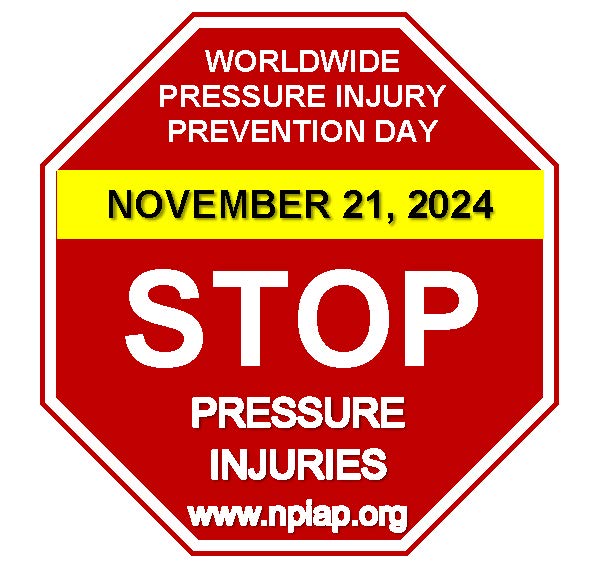
Partners in Prevention, Time to Act, to Keep the Skin Intact!
Worldwide Pressure Injury Prevention Day
Join us November 21st in building awareness for pressure injuries and how you can prevent them on Stop the Pressure Day.
Prevention is Key! Avoid pressure, friction, and shear injuries.
Regularly changing a person’s lying or sitting position is the best way to prevent pressure injuries (or bed sores). Changing positions every 2 hours helps keep blood flowing to the skin. Be careful to avoid friction (i.e. occurs when the skin rubs against clothing or bedding) and shear (occurs when two surfaces move in opposite direction).
The semi side lying position allows most bony landmarks to be free of pressure and avoids putting pressure directly on the hip. This can be achieved with pillows or wedge cushions. Avoid closed cut outs or doughnut-type cushions. Specialty mattresses for beds, wheelchair or seat cushion, and heel and elbow protectors are a few prevention devices available for those at risk for pressure injury or with a pressure injury.
Common sites for pressure injuries include the back of the head and ears, the shoulders, the elbows, the lower back and buttocks, the hips, knees, and heels. The tailbone area and the heels are the most common sites for pressure injuries.
Risk factors for pressure injury: altered sensation (spinal cord injuries, sedation, neuropathy), decreased mobility (paralysis, wheelchair bound), urinary or bowel incontinence (skin is more vulnerable to breakdown when exposed to urine or stool for long periods of time), poor nutrition (lack of protein or fluids make skin more susceptible to breakdown), advanced age, poor health, medical conditions that affect blood flow or circulation, and medical devices (nasal cannula, IV, catheter).
Check the skin for changes in color (red, pink, purple), especially over bony areas, as this may be the first sign that a pressure injury is developing. Check for openings in the skin or drainage. If a wound does develop, wash the area with mild soap and water, cover the wound with a foam style bandage, and avoid pressure to the area. Notify your care provider and request a referral to Oaklawn Wound Care Center. Wound care centers offer clinical expertise and scientific evidence to help heal wounds.


